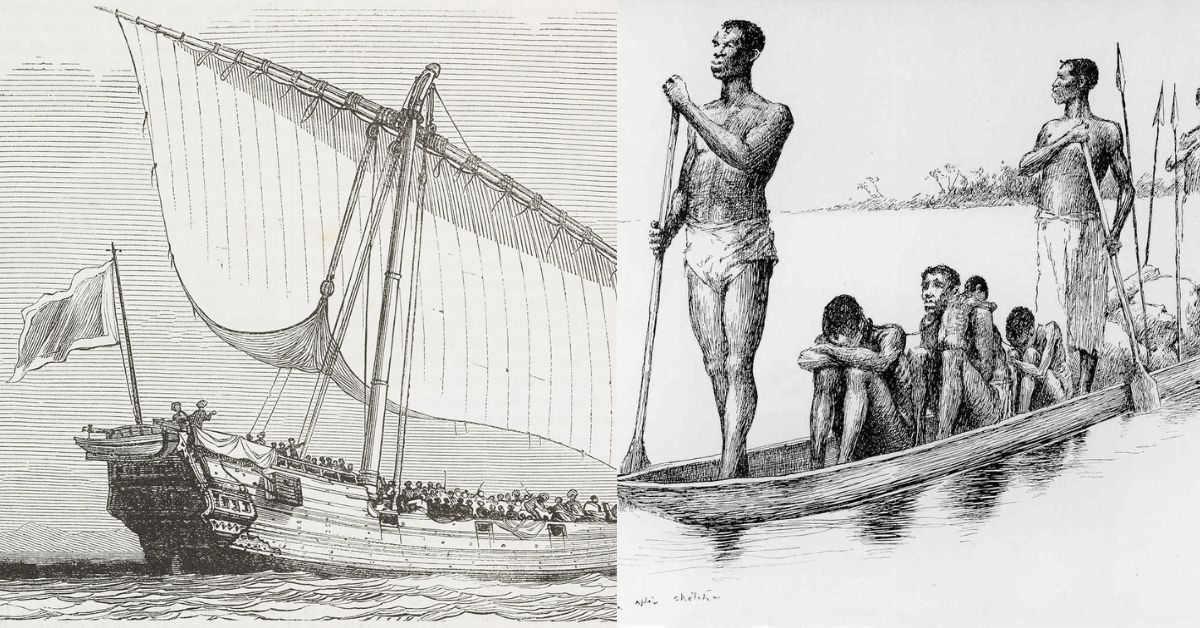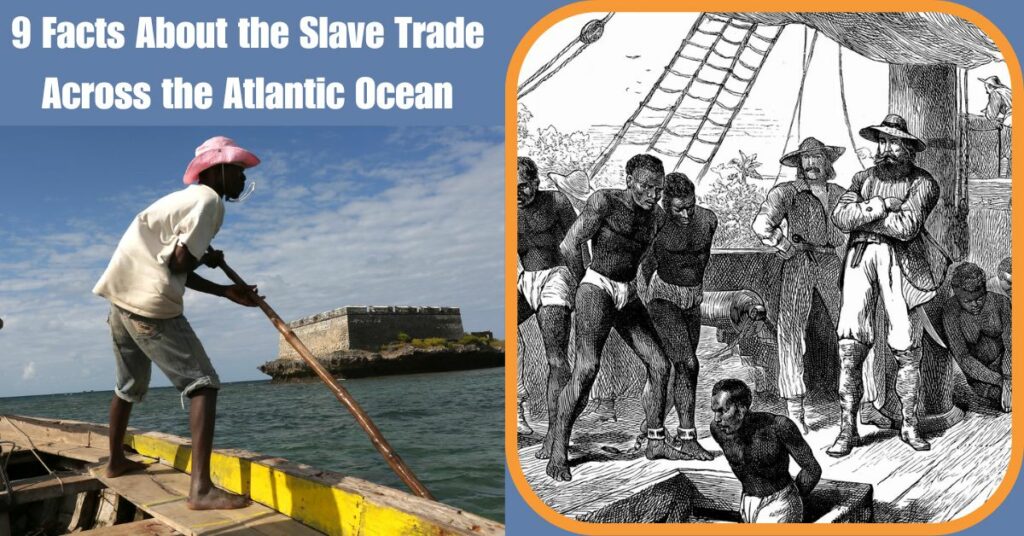Below are some lesser-known facts regarding the transportation and enslavement of Africans, ranging from the role of women to its global reach. One of the biggest crimes against humanity in recorded history was the Atlantic slave trade.
Over the span of four centuries, the enslavement and “Middle Passage” transportation of millions of Africans over the Atlantic Ocean gave rise to a brutal and prosperous economy. These nine facts about the slave trade are less well-known:
1. The Atlantic Slave Trade Was the Largest Oceanic Forced Migration in History
Humans have traded slaves for a very long time, frequently across great distances, but no other trade has ever been as large as the Atlantic slave trade. Slave dealers coerced over 12.5 million men, women, and children into transatlantic slave ships off the coast of Africa between the early 1500s and the 1860s.
This figure does not account for the millions more that lost their lives either in the process of travelling from the interior to the shore or before a slave ship could come and take them away.
2. ‘triangle Trade’ is Only Partially Accurate
Slave ships, as most of us remember from school, travelling in a triangle, leaving from Europe, travelling via Africa, the Americas, and returning to Europe. However, there were significant differences. Numerous journeys started in the Americas, went to Africa, and then came back to the Americas.
The route that ran from Rio de Janeiro, Brazil, to Luanda, Angola, and back was the longest one in the history of the slave trade. Some voyages brought captives back to the Americas after leaving from American ports including Charleston, South Carolina, and Newport, Rhode Island.
3. Many Slave Traders Were Women
Slavevoyages.org states that although men made up the majority of slave dealers, hundreds of women made investments in the trade. The widows of slave-trader husbands frequently took over their investments in Britain, France, and the Netherlands.
In the 1850s and early 1860s, American Mary Watson, one of the last known slave traders, sent out her own ships from New York. In 1862, Watson tried to find a new base in Spain following the American government’s ban on the slave trade; however, he succumbed to disease.
4. Enslaved People Fought the Slave Trade
Throughout the Atlantic journey, captives experienced horrific violence and trauma. Slavevoyages.org estimates that 15% of them perished. Slave dealers made every effort to keep their victims from retaliating, arming themselves, or shackling their human “cargo.” Captives, however, refused. At least 10% of the journeys had rebelled, most often when the ship was.

s were in or close to the African coast. Even while these uprisings were rarely successful, they had a greater effect. Rebels raised the prices of slave traders and decreased the number of trips they took to sea by making them take additional safety measures, such as adding more sailors to their ships.
This saved an estimated 1 million captives from making the Middle Passage, according to some academic estimates.
5. Slaves Not Only Fought the Slave Trade They Helped End It
Books and films frequently portray political figures like Britain’s William Wilberforce as spearheading the antislavery fight. Even though these men were instrumental in the slave trade’s abolition, the slaves themselves were its first and most steadfast opponents.
The rebellion that occurred in Saint Domingue, a French Caribbean territory that was one of the main ports of call for slave ships in the 1700s, demonstrates how important their opposition proved to be. Slaves there revolted against the system of slavery in the 1790s, and then they rebelled against French colonial control.
And they prevailed. By 1804, they had overthrown France and Napoleon Bonaparte, the country’s leader, and made sure that slavery and the slave trade would never exist again. They gave their nation a new name: Haiti, which is the name it is currently known by.
Click on the following article links to read more such facts:
6. The Slave Trade Continued to Flourish, Even After Countries Legally Banned It
Many nations began to doubt the validity of the slave trade by the late 1700s. By the 1830s, all of the European and American countries that had traded slaves had outlawed the practice, either through international treaties or domestic legislation.
However, under diplomatic pressure, a number of powers—including Brazil and Spain—reluctantly made the decision. They didn’t really plan on carrying out their bans. The slave trade was profitable even in the 1800s when traffickers bought off government officials to overlook their transgressions with hefty sums.
Brazil and the Spanish island of Cuba were the destinations of the majority of captives who survived the clandestine slave trade in the 1800s. Many were shipped on American-built ships flying the American flag, which the American authorities showed little interest in monitoring.
Slavevoyage.org states that throughout the 1800s, 1.65 million captives were transported on unauthorized slave ships by slave dealers, accounting for 13% of the total slave trade. Cuba was the destination of the final slave ship to sail across the Atlantic Ocean in the late 1860s.
7. The Atlantic Slave Trade Was Global
The transatlantic slave trade had far-reaching effects. In exchange for Africans who were in slavery, European slave traffickers purchased cowrie shells from the Maldives in the Indian Ocean and textiles from South Asia. Non-Atlantic Africa was involved in the slave trade in several areas as well.
From Mozambique, on the eastern coast of Africa, some slave ships transported prisoners to the Americas. Slaves extracted gold and silver from some American regions, which their masters occasionally exported to China.
8. The Slave Trade Transformed the World
The slave trade had a profound impact on people’s lives, economies, ecosystems, and cultures. Naturally, it devastated millions of enslaved people first. Aside from the 1 to 2 million people who perished during the Middle Passage, survivors typically had to endure harsh labour and slavery for the rest of their lives in the Americas.
Aside from perpetuating Black people’s centuries-long oppression, the slave trade strengthened racial hierarchies in the Americas and Europe. The trade bolstered the political and economic structures of capitalism, industrialization, and imperialism—all closely related to each other—and benefitted societies and enslavers across the Atlantic.
Additionally, it altered ecosystems and surroundings by bringing exotic species from Africa to the Americas, such as mosquitoes, and compelling enslaved people to cut down trees in order to grow cash crops for export, such as cotton and sugar.
Given the richness and remarkable diversity of African cultures, as well as the fact that until the 1820s, more Africans than Europeans were transported across the Atlantic Ocean as slaves, it is not unexpected that enslaved Africans left a lasting cultural legacy in the Americas. African influences are present throughout the Americas in language, music, religion, food, and medicine.
9. Enslaved People Have Stories to Tell
Historians keep compiling data on inmates and narrating their tales. Tens of thousands of enslaved people’s identities and other details are available in new databases like enslaved.org and slavevoyages.org/past/database.
Oluale Kossola, who went by Cudjo Lewis later in life, is one person whose incredible story has garnered a lot of attention recently. Taken prisoner by Dahomey fighters in what is now Benin in 1860 and transported to Alabama, Kossola travelled on the Clotilda, the final slave ship to reach the United States.
Kossola joined other Clotilda prisoners to establish Africatown, Alabama, a new settlement after surviving the Middle Passage and slavery in the American South. This town is still in operation today.
Hope you like it. Stay tuned with us on Thegeofacts.com for more amazing updates.
